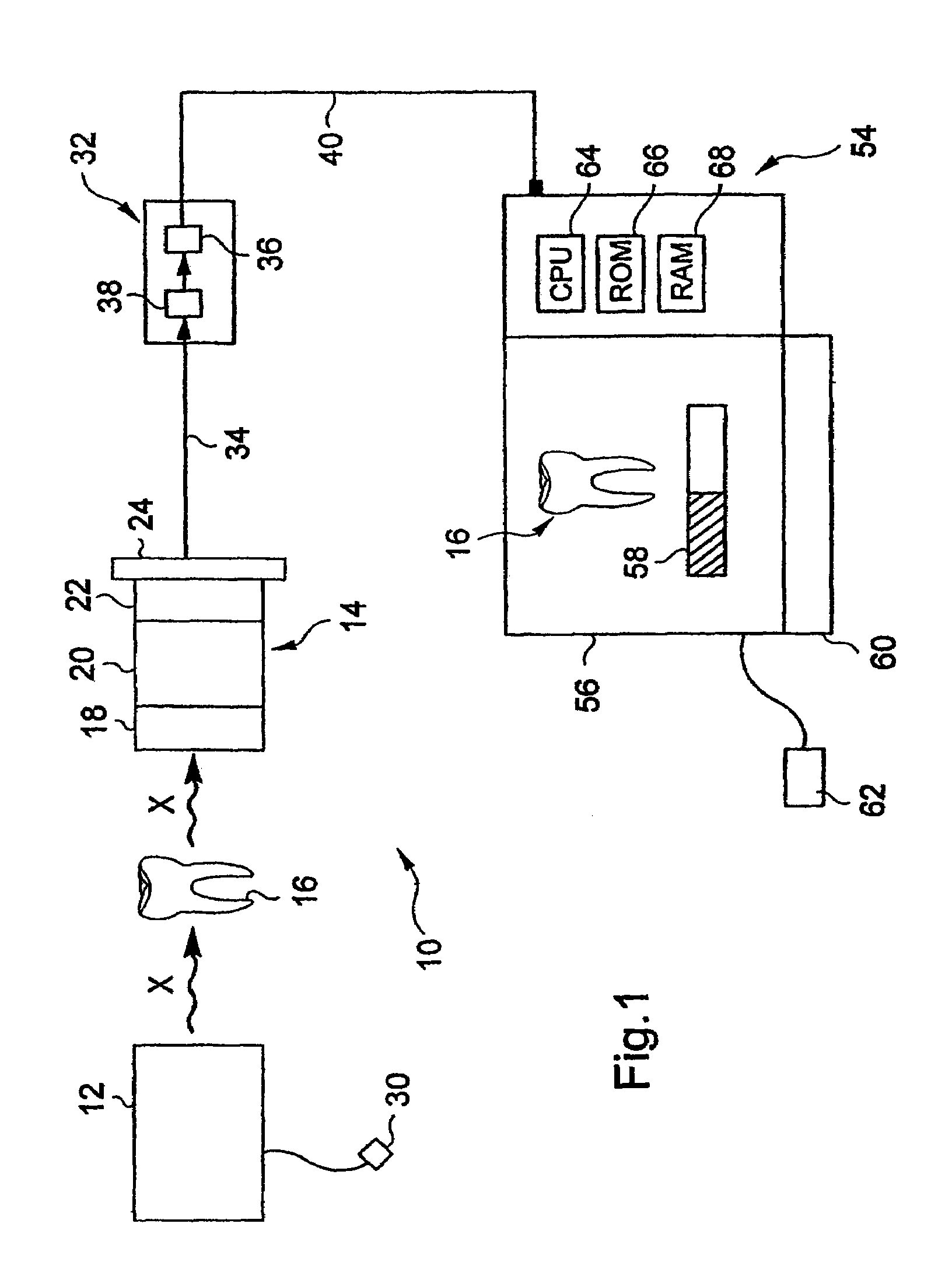Signal processing method in a dental radiology apparatus
a dental radiology and signal processing technology, applied in the field of dental radiology, can solve problems such as not being able to do by most users
- Summary
- Abstract
- Description
- Claims
- Application Information
AI Technical Summary
Benefits of technology
Problems solved by technology
Method used
Image
Examples
Embodiment Construction
[0066]As represented in FIG. 1, an x-ray dental radiology apparatus 10 comprises an x-ray source 12 placed outside a patient's mouth and an intraoral radiation sensor 14 arranged in a patient's mouth, behind a tooth 16, and which is capable of receiving the x-rays that have passed through the tooth.
[0067]The sensor 14 comprises, in the propagation order of the radiation, a scintillator 18 that converts the x-rays that have passed through the tooth into visible light, possibly a fiber optic plate that, on the one hand, includes metal particles intended to absorb the part of the x-rays received by the scintillator and not converted into visible light and, on the other hand, conducts the visible light thus converted to a detector 22. This detector is mounted on a ceramic substrate 24 and converts the visible radiation from the optical fibers into one or more analog electrical signals.
[0068]It may be noted that other sensor structures can be suitable including, for example, a sensor wit...
PUM
 Login to View More
Login to View More Abstract
Description
Claims
Application Information
 Login to View More
Login to View More - R&D
- Intellectual Property
- Life Sciences
- Materials
- Tech Scout
- Unparalleled Data Quality
- Higher Quality Content
- 60% Fewer Hallucinations
Browse by: Latest US Patents, China's latest patents, Technical Efficacy Thesaurus, Application Domain, Technology Topic, Popular Technical Reports.
© 2025 PatSnap. All rights reserved.Legal|Privacy policy|Modern Slavery Act Transparency Statement|Sitemap|About US| Contact US: help@patsnap.com



